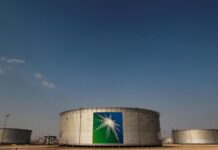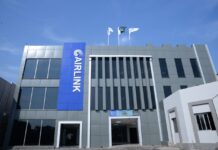Pakistan’s stock market has been through a lot in the past couple of years.
In June last year, there was unabated optimism in the market as the country was nearing the last installment of its stand by agreement with the International Monetary Fund (IMF). Since then, the news cycle has seen sustained optimism. The market has gone from languishing at 41,000 points to touching the highs of 81,840. That means the market has nearly doubled from where it was a year ago.
A year which started with expectations of an IMF SBA coming through has ended with another deal seeming to be near completion. The positivity has been boosted by two facts that revolve around the federal budget that was presented and passed. The first was that many of the terms and conditions that had been stipulated by the IMF were agreed to and the budget presented was according to the wishes of the IMF. The second was that before the budget was announced, the market had been jittery as it felt that stock ownership would be taxed heavily with a particular interest being taken in the corporate sector taxation. Once the budget was presented, many of these fears were allayed as none of the nightmares materialized. Other than a few sectors being taxed, it was primarily status quo for the corporate sector. Coupled with similar taxation on dividend and capital gains meant that the party on the stock market could keep rolling on.
In terms of the macroeconomic conditions, positive sentiments have prevailed in the market. It might point towards some of the dissonance between the market and the economic uncertainty it was prevailing in. Interest rates had been increased in June of 2023 to 22% and there was widespread political and economic instability. In these circumstances, the market performance does lack logical rationale. However, it has to be kept in mind that the corporations were posting amazing results in these circumstances. The KSE-100 index is mostly weighted towards banks, fertilizer, oil and gas exploration with the top 10 companies making up 41.5% of the weightage and the top quarter companies making almost 71%. In terms of the performance of each of these sectors, it can be seen that the increase in index was due to these three sectors.
From a micro perspective, there were some companies that were part of the 100 index which saw better performance than the index itself. The KSE 100 index is a weighted average which means there would be some companies that would perform better than the index. Fauj Fertilizer Bin Qasim led the charge where it increased by more than 262% in the last year. Similarly, companies like Service industries, Pak Electron, Meezan Bank, Standard Chartered Bank Pakistan and Thal Limited saw an increase of 243%, 184%, 180% and 160% respectively.
Similarly, certain companies saw their returns fall in the last year which are part of the index. TRG Pakistan was the leading loser as it lost around 42% of its value in the last year. This was followed by Lotte Chemical, Rafhan Maize, Javedan Corporation and Engro Polymer which lost 38%, 11%, 2.4% and 1.9% respectively.
In terms of all the companies listed on the stock exchange, there were companies that saw mind boggling returns which add to the narrative to irrationality in the prices being quoted at the stock exchange. The company with the highest returns were Bela Automotive and Chakwal Spinning which were both trading at Rs 1.4 last year. The companies have been listed as a defaulter company as they had become non-compliant to the PSX regulation. Since then, Bela Engineering has gone to Rs 97 which is an increase of 7362%. On the other hand, Chakwal has changed its symbol and has seen its price increase to Rs 50.31 per share. That is a return of 3231% meaning an investor was able to see his investment grow more than 32 times in the last year. The problem with these two cases is that there hasn’t been a fundamental change in the company or its earnings while their share price has increased by such magnitude. Even though these shares have no contribution in the increase seen in the index itself, still these can be seen as outliers in the bull market.
This does not mean that all share prices are being pumped without any economic rationale. Companies like Sazgar Engineering and Ghandhara Automobile are two such companies which have seen their share prices increase by 2100% and 900% respectively. These two have been seeing an increase in their revenues and sales in recent times. Sazgar has set up a plant in the country to assemble Haval cars and have expanded their product portfolio in the last year. Ghandhara Automobiles has also started assembling Chery, Dongfeng and JAC branded cars and trucks. Both these companies are seeing an interest from the market and it seems there is an appetite for the cars being produced.
In terms of companies that saw the biggest decrease in prices were TPL Insurance which saw a decrease of 50% while Mirpurkhas Sugar saw a decrease of 42%. The losses seen in the shares seem to be dwarfed by the increase that was seen in the market which do point towards the fact that the general sentiment in the market was positive. There was also a feeling of a negative overhang in the market last year which meant that even when companies were performing well, the investors were skeptical due to the general feeling in the market. Before this increase, the market had been stuck between a range of 20,000 and 40,000 points for the last 5 years. There was a feeling that the market was stuck in a rut. Once the index started to increase, it seemed like the storm clouds had dissipated and the sentiment on the trading floor changed seeing increase in price of many companies.
Going forward, it can be seen that the fundamentals are strong for the corporate sector of the country and, with interest rates finally being lowered, there is further potential for the market to keep breaking records in the near future. Due to international pressures in the international markets, the market has seen corrections in recent trading sessions. The market has lost around 4.500 points from the high it achieved on 18th of July of 81,840. However, even in that case, the growth in the corporate sector is robust and with earnings season round the corner, it can be expected that the market will be buoyed when their expectations are met and even surpassed in the coming month or so. With inflation numbers on the lower side and real interest rates registering in the positive region, there is also a high probability that the policy rate will decrease further which will push the rally on for longer.
The recent performance and the future outlook of the market does suggest that even though there is political and economic uncertainty reigning in the country, the growth in the corporate sector is strong and sustainable. The past year has shown that a string of positive developments have helped the index increase and it can be expected that the coming few months will prove to be more of the same.

























